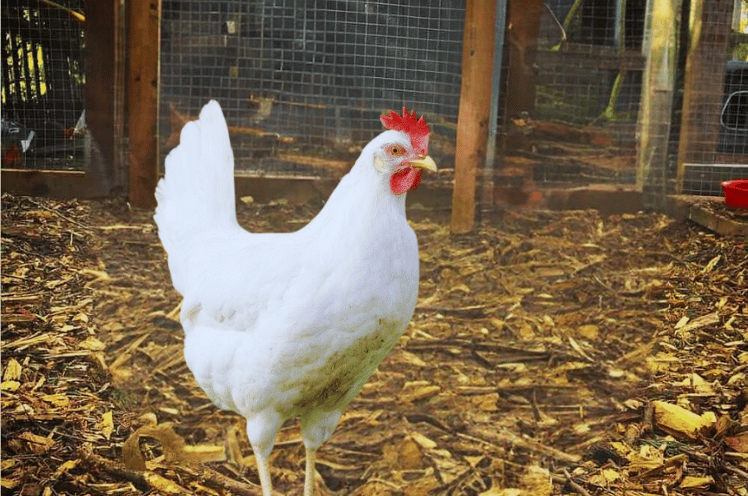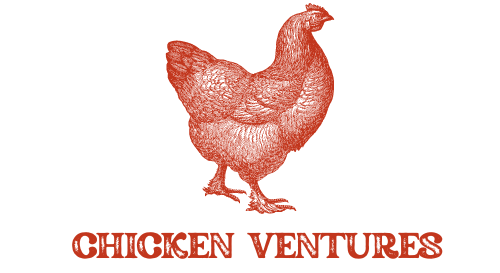White Leghorn chickens are known to lay a good number of eggs. White Leghorns are the best choice for collecting eggs because they are light and have good hunting skills. They’re free souls, so they’ll go wherever they can, even up in trees. They are great for yards that need a chicken that can lay eggs on its own.
My daughter fell in love with these pretty white chickens as soon as she saw them in the nursery catalogue. There are big, bright red combs on both the hens and the roosters, making them look like the famous cartoon chicken.
I decided to get them when I learned that they laid more eggs than almost any other breed of chicken.
We learned that white leghorn chickens aren’t right for us after having them for a season. When my kids pet and fuss over their chickens in the garden, white leghorns don’t like it. They tend to fly away and aren’t very nice. Also, if there are calmer chickens in the coop, they will likely pick on them too.
They stay away from other birds and lay a lot of eggs, but they didn’t do well in our group. If all you want to do is get eggs and don’t have any kids who want to pet them, white leghorns might be a good choice.
This chicken is great if you want to save money on food and get as many eggs as possible every year.
History Of White Leghorn Chickens
Born in Tuscany, Italy, and first known as “Italians,” this breed came to the United States in 1828. They started going by the name Leghorn after forty years. This is the English version of the name Livorno, which is the name of the port that sent them. In England, they were mixed with Minorcas to make them a little bigger so that they could be used to raise meat.
After that, this strain made its way back to the US, where it has become a favorite of
industrial farms.
There are different kinds of Leghorns, and white Leghorns are one of them. Their bright red combs and white feathers make them easy to spot. You can get them with a single comb or a rose comb. The legs of every White Leghorn will be clean, and their earlobes will be white.
WHITE LEGHORN CHICKENS PROS AND CONS
The white leghorn chicken has many good and bad traits. If you need to quickly decide what to do, here is a list of the pros and cons:
PROS
- Excellent egg producers
- Low food costs
- Savvy foragers
- Lively and comical to watch
CONS
- Noisy
- Stand-offish
- Low meat production
- Not good in mixed flocks

Characteristics Of White Leghorn Chickens
People say these chickens are flighty around people, but they are actually very aware and active birds. They are great foragers but not very good pets. Even though they won’t be dangerous, you will have to think about them jumping fences on your property and getting out of jail.
They do best in warm weather, and rose comb Leghorns are better able to handle cold weather than their single-combed brothers and sisters. They lay at least 280 eggs a year, but up to 320! It doesn’t matter what the weather is like; they’re great egg layers. The boys will weigh about 6 pounds, and the females will weigh about 5 pounds. They aren’t the best for eating because most of their weight is not meat.
| Breed Name: | White Leghorn Chickens |
| Breed Type: | Mediterranean |
| Temperament: | Active, alert, flighty |
| Size: | Medium |
| Eggs Per Year: | 280-320 |
| Egg Size: | Large |
| Egg Color: | White |
| Lifespan: | 4-7 years |
Breed Standard White Leghorn Chickens
They have what looks like a V-shaped body because they stand up straight, and their tails are long and straight. Their feathers are all white, and their combs and wattles are red. The combs on hens will fall to the side, making them look cute and funny. Males’ combs tend to stand up straight, but some parts may lean to the side.
When this breed’s chicks are born, they have bright, fluffy yellow feathers. Their combs start to show as early as 3 weeks old, and they lay eggs between 18 and 20 weeks old. You will have to wait until their combs grow out to tell which ones are your hens because White Leghorns don’t have sex themselves.

TEMPERAMENT
They are not on your side, but they are also not your enemy. You’ll find them to be smart, curious, and love to explore. They’re not friendly. But because they are very aware of predators, they are flighty and won’t come close to you. Handled chicks will put up with it, but they won’t enjoy it.
Hardiness
Since they are from Italy, they can handle heat very well. Their big combs help them stay cool, but this does make them more likely to get frostbite in northern regions. Protect them from this problem, and they’ll be able to handle cold weather well.
Egg Production Of White Leghorn Chickens
In terms of laying eggs, they are the stars! Each year, they lay between 280 and 320 eggs. With how little they eat and how well they can find food, they have the best food cost to egg production ratio of any birds I’ve seen.
Egg Color
The eggs that your hens lay will be pure white and have no other color on them.
Meat
This breed is not multipurpose. Some Leghorns can get a little bigger, so you could make it work, but they don’t make much meat.
Broodiness
Since White Leghorns were bred to lay eggs, they don’t naturally breed. This type of hens also doesn’t care much for chicks and doesn’t make a good mother. For best results, hatch eggs in incubators and grow chicks separately from the adults.
These broody hen breeds are a good choice if you want a group that can take care of itself and won’t need incubators or new chicks sent to you by mail.
Foraging Ability
Their way of life is to find food. To the point. You’ll find that they are smart about predators, even though their combs sometimes fall into their eyes. A rooster will sit high up and watch over the group to help keep them safe. They are loud and will run away rather than fight when they sense danger. Because they can fly well, your group will often look for shelter in trees or on low roofs.
Cross Breeds
Their family tree is a secret to them. It’s clear that they come from a landrace in Italy, but the only known breed they’ve been mixed with is the Minorca. There are some White Leghorns in the US that are not from the Minorca strain, though. These are called “industrial” varieties because they are used on business farms.
Health Issues
These birds are in great health. In colder places, winter is the worst time for them because their combs can get frostbite. That won’t happen as much with rose comb types, but you should still be careful.
Summary
With these birds, you will need to give them a lot of space. They are smart and interested, so they will need to discover every day to keep from getting bored. Toys, perches with different heights, and piles of leaves can keep them busy, but daily hunting is the best way to keep them from being angry and stress-plucking.
You’ll have to work hard to keep them from jumping fences or sleeping in trees because they can fly well. It’s easy for them to get over 6-foot fences, and some owners say they can even get over 10-foot fences. You will need a roof over the room if you want to keep them in a coop or some other enclosed area.
Lastly, they make a lot of noise. People should only put these birds in areas that aren’t cities, because people living nearby will definitely hear them.

